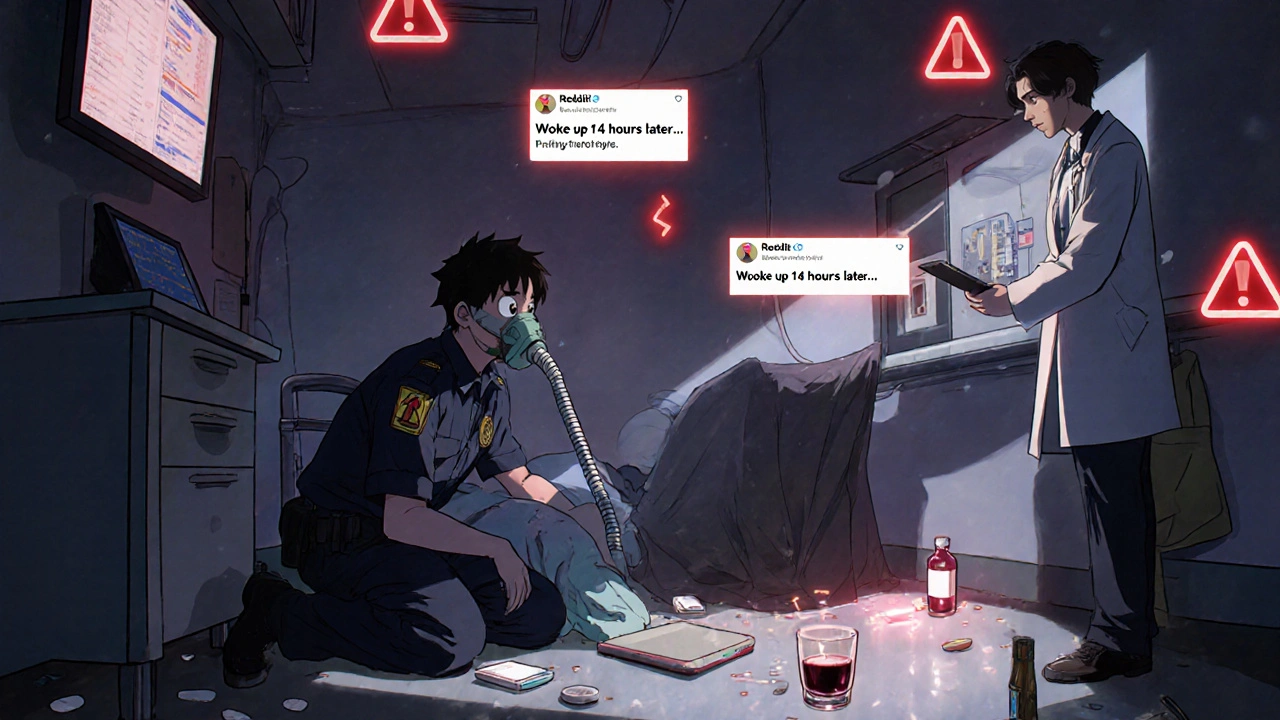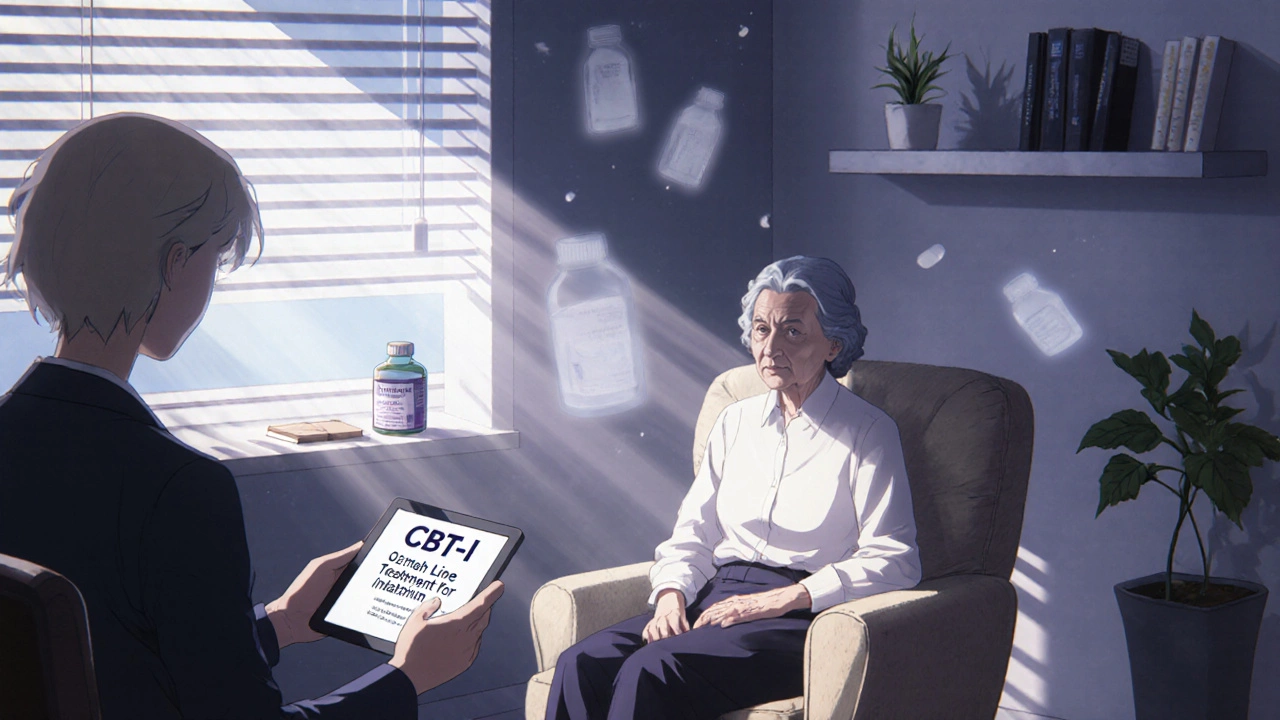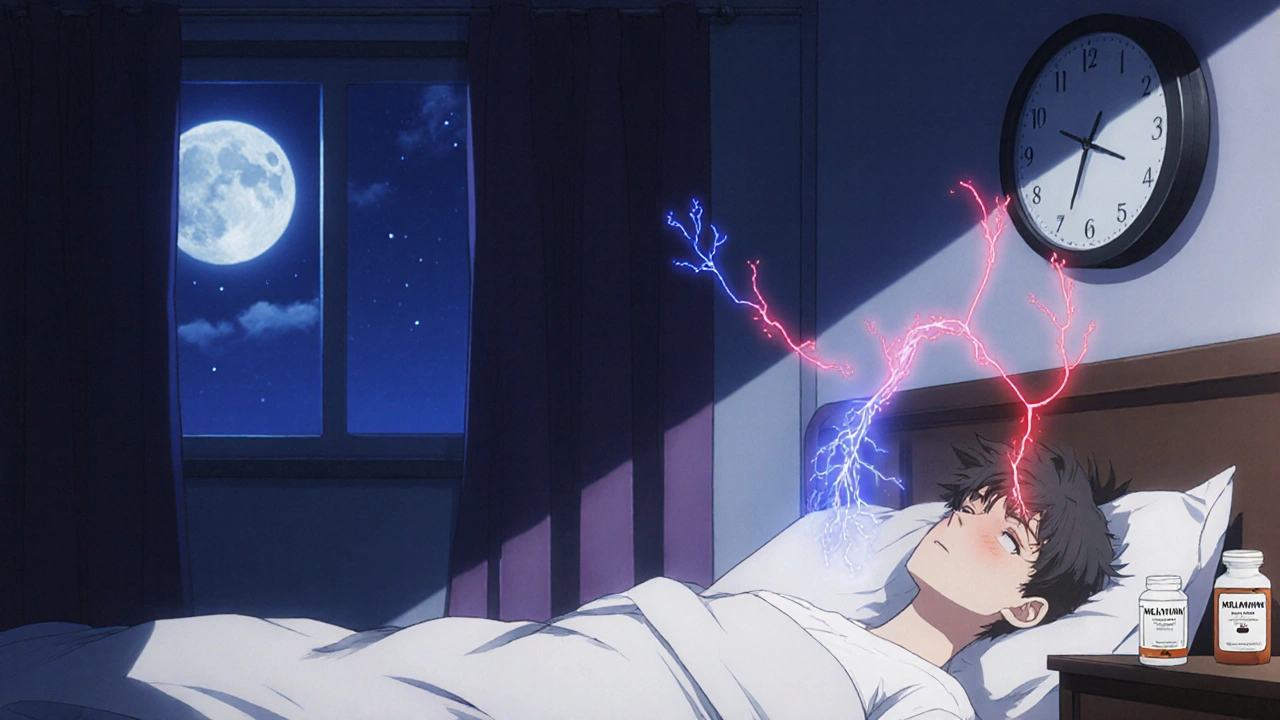Melatonin-Sedative Interaction Checker
Check Medication Interactions
This tool helps identify potential dangerous interactions between melatonin and common sedative medications. Always consult your doctor before combining medications.
Interaction Risk Assessment
More people are taking melatonin than ever before. In 2022, over 3.1 million American adults used it as a sleep aid. That’s up 165% since 2007. It’s cheap, easy to find, and many assume it’s harmless-just a natural way to fall asleep. But here’s the problem: melatonin isn’t harmless when mixed with prescription sedatives. And too many people don’t realize how dangerous that mix can be.
What Happens When Melatonin Meets Sedatives?
Melatonin works by signaling to your brain that it’s time to sleep. It binds to receptors in your brain’s internal clock, helping shift your sleep-wake cycle. But it doesn’t just stop there. Research shows it also affects GABA-B and opioid receptors-same pathways targeted by benzodiazepines, sleep pills like Ambien, and even some antidepressants. When you take melatonin along with these drugs, their effects don’t just add up-they multiply.Imagine two quiet people in a room. Alone, they’re calm. But together, they lower the volume even further. That’s what happens in your central nervous system. Your breathing slows. Your reaction time drops. Your ability to wake up quickly disappears. A 2020 study in the Journal of Clinical Sleep Medicine found that combining melatonin with benzodiazepines like diazepam increases the risk of respiratory depression by 47%. That’s higher than combining two prescription sedatives alone.
And it’s not just about feeling sleepy. People have woken up hours later with no memory of the night. Others have driven while overdosed and ended up in ditches. One Reddit user wrote about taking 3mg of melatonin with 0.5mg of Xanax and waking up 14 hours later, disoriented and confused. That’s not an outlier-it’s a pattern.
Why Melatonin Feels Safe (But Isn’t)
Melatonin is sold as a supplement, not a drug. That means the FDA doesn’t test it for safety or effectiveness before it hits store shelves. In 2022 alone, the FDA sent out 12 warning letters to manufacturers for mislabeled, contaminated, or over-dosed products. Some pills contained up to 10 times the labeled amount. Others had no melatonin at all-just fillers.Because it’s not regulated like a drug, people assume it’s safe to mix. But the science says otherwise. Melatonin’s effects are real. Even at low doses (0.3mg), it can cause daytime drowsiness. The NHS warns against driving or operating machinery within five hours of taking it. And when you layer that on top of a sedative like zolpidem, zaleplon, or alprazolam, you’re not just doubling the risk-you’re tripling or quadrupling it.
Compared to prescription sleep aids, melatonin is weaker. A 2021 Cochrane Review found that zolpidem cuts sleep onset time by about 22 minutes. Melatonin? Just 4 minutes. But here’s the catch: zolpidem carries a 32% higher risk of next-day impairment. Melatonin doesn’t cause dependence or withdrawal. But when paired with sedatives, it becomes a silent amplifier of danger.

Who’s at Highest Risk?
Older adults are the most vulnerable. The American Geriatrics Society’s 2023 Beers Criteria specifically warns against using melatonin with benzodiazepines in people over 65. Why? Because aging slows how the body processes both substances. The result? Higher blood levels, longer effects, and a 68% higher risk of falling. One fall can mean a broken hip, hospitalization, or worse.People taking multiple medications are also at risk. Antidepressants like SSRIs, antipsychotics, muscle relaxants, and even some over-the-counter cold medicines (like diphenhydramine) can interact with melatonin. The Cleveland Clinic recommends screening for 14 different medication classes before even considering melatonin.
And then there’s the self-medication problem. A 2022 ConsumerLab survey found that 28% of supplement users combined melatonin with prescription sedatives without telling their doctor. Of those, 37% experienced unintended oversedation. Four percent needed emergency care.

What Should You Do Instead?
If you’re using melatonin because your sleep isn’t working, stop trying to fix it with more chemicals. The real solution isn’t another pill-it’s cognitive behavioral therapy for insomnia, or CBT-I. The American College of Physicians now recommends CBT-I as the first-line treatment for chronic insomnia. It’s more effective than any sleep aid, long-term, and has zero interaction risks.Still want to try melatonin? Here’s how to do it safely:
- Use the lowest effective dose: 0.3mg to 0.5mg is often enough. Most store-bought pills are 3mg or 5mg-way too high.
- Take it 30 to 60 minutes before bed. Not right before you get into bed. Not after scrolling on your phone.
- Wait at least five hours after taking melatonin before driving, operating machinery, or making important decisions.
- If you’re on any sedative-prescription or OTC-don’t take melatonin unless your doctor says it’s okay.
- Choose prolonged-release melatonin if you can. It mimics your body’s natural release pattern and reduces interaction risks by 31% compared to immediate-release versions.
The Bottom Line: Don’t Guess. Ask.
Melatonin isn’t the villain. But treating it like candy is. The rise in its use isn’t just about sleep-it’s about a culture that sees anything labeled “natural” as safe. That’s a dangerous myth.The American Academy of Sleep Medicine now classifies combining melatonin with sedatives as “conditionally recommended against.” That’s their polite way of saying: don’t do it unless you’re under direct medical supervision.
If you’re taking any sleep aid-whether it’s Ambien, Klonopin, trazodone, or even Benadryl-talk to your doctor before adding melatonin. Bring your pill bottles. Ask: “Could this interact with what I’m already taking?”
There’s no shame in needing help sleeping. But there’s huge risk in mixing things you don’t fully understand. Your brain doesn’t know the difference between a supplement and a drug. It only knows what chemicals are in your bloodstream-and how they’re affecting your breathing, your balance, your memory, and your safety.
When it comes to sleep, less is often more. And sometimes, the safest thing you can do is nothing at all-until you’ve talked to someone who knows what they’re doing.
Can I take melatonin with alcohol?
No. Alcohol is a central nervous system depressant, just like sedatives. Mixing it with melatonin increases drowsiness, impairs coordination, and raises the risk of respiratory depression. Even one drink can turn a normal dose of melatonin into a dangerous combination. The National Sleep Foundation advises avoiding alcohol entirely when using melatonin.
Is melatonin addictive?
Melatonin itself doesn’t cause physical dependence or withdrawal symptoms, even after months of use. That’s one of its biggest advantages over prescription sleep pills. But your body can become reliant on it to fall asleep-especially if you’re using high doses or taking it every night. This isn’t addiction, but it can lead to difficulty sleeping without it. The goal should be to use it short-term while fixing the root cause of poor sleep.
What are the signs of melatonin and sedative overdose?
Signs include extreme drowsiness, confusion, slurred speech, slow or shallow breathing, dizziness, inability to wake up, and loss of coordination. In severe cases, it can lead to unconsciousness or respiratory failure. If someone shows these symptoms after combining melatonin with a sedative, call emergency services immediately. Don’t wait. This isn’t just a bad night’s sleep-it’s a medical emergency.
Are there safer alternatives to melatonin for sleep?
Yes. Cognitive behavioral therapy for insomnia (CBT-I) is the most effective long-term treatment, with results that last years after treatment ends. Other options include improving sleep hygiene-like keeping a consistent bedtime, avoiding screens before sleep, and making your bedroom dark and cool. Magnesium glycinate and glycine are supplements with less interaction risk than melatonin, but even these should be discussed with a doctor if you’re on other medications.
Why do some doctors still recommend melatonin with sedatives?
Some doctors may recommend it out of habit or because they assume melatonin is harmless. But guidelines have changed. In 2018, nearly half of primary care doctors endorsed combining melatonin with sedatives. By 2023, that number dropped to 22%. The American Academy of Sleep Medicine and the FDA now clearly warn against it. If your doctor still recommends it, ask for the latest evidence. You deserve care based on current science, not outdated assumptions.



8 Comments
Dion Hetemi November 19, 2025 AT 09:49
So let me get this straight - you’re telling me that people are treating melatonin like it’s gummy vitamins and then stacking it with Xanax like it’s a damn smoothie? Bro. We’re talking about CNS depression here. Not a yoga retreat. I’ve seen ER reports where people woke up in the back of ambulances because they thought ‘natural’ meant ‘no consequences.’ Wake up. This isn’t biohacking. It’s a slow-motion car crash with a side of delusion.
Kara Binning November 20, 2025 AT 05:15
Ugh. I’m so tired of this ‘natural = safe’ nonsense. My aunt took 10mg of melatonin with her Klonopin because ‘it’s just a hormone.’ She fell, broke her hip, and now she’s in rehab. And the pharmacist just shrugged. No one checks these things. The system is broken. And we’re all paying for it with our bodies.
Angela Gutschwager November 20, 2025 AT 14:16
This is why you don’t mix supplements with prescriptions. Period. 🙄
river weiss November 22, 2025 AT 10:25
Thank you for this. Truly. I’ve been telling my patients for years that melatonin isn’t ‘harmless’-but they google it and come back with 17 Reddit threads claiming it’s ‘the new miracle cure.’ The FDA’s lack of oversight on supplements is a public health scandal. And the fact that people don’t realize melatonin affects GABA-B receptors? That’s not ignorance-it’s negligence. Please, if you’re on any CNS depressant: don’t guess. Ask your pharmacist. Bring your bottles. Write down your doses. This isn’t about being paranoid. It’s about being alive.
Andy Feltus November 24, 2025 AT 06:06
It’s funny how we treat chemicals like they have moral value. Melatonin is ‘natural,’ so it’s good. Xanax is ‘synthetic,’ so it’s bad. But your liver doesn’t care about the label. It just sees molecules. And if two molecules decide to hold hands and slow your breathing? That’s physics, not philosophy. We’ve turned medicine into a spiritual quest. We want the pill that fixes everything without consequences. But biology doesn’t do free lunches. Ever.
seamus moginie November 25, 2025 AT 21:34
As someone who has spent 15 years in Irish public health, I can confirm this is a growing crisis. The normalization of polypharmacy with unregulated supplements is a direct result of deregulation and corporate marketing. In Dublin, we’ve seen a 200% increase in ER admissions linked to melatonin-sedative combinations since 2020. The term ‘natural’ is now a legal loophole for dangerous products. This isn’t just an American problem-it’s a global failure of education and regulation. We need mandatory warning labels on every bottle. And we need to stop calling it a ‘supplement.’ It’s a psychoactive compound. Call it what it is.
Nick Lesieur November 26, 2025 AT 11:50
so like… if i take 1mg melatonin and 1 benadryl… am i gonna die?? 😬 or is that just a lil nap? like… chill??
James Ó Nuanáin November 26, 2025 AT 16:15
Let me be perfectly clear: the American healthcare system has become a carnival of self-medication, and the British public, by contrast, maintains a level of clinical discipline that is simply superior. Melatonin, as a non-pharmaceutical agent, should never be considered in conjunction with licensed sedatives-especially not by those who cannot even spell ‘benzodiazepine’ correctly. The FDA’s lax oversight is an embarrassment to rational medicine. If you are taking anything that alters your central nervous system, you owe it to yourself-and to society-to consult a physician. Not a YouTube influencer. Not a Reddit thread. Not your cousin who ‘tried it once and slept for 18 hours.’ We are not living in a post-truth era of pharmacology. We are living in a post-dead era. And it’s all because people refuse to accept that medicine requires discipline, not dopamine.